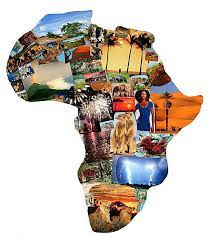Towards a United States of Africa: A Comprehensive Strategic Framework
This article proposes a strategic framework for the creation of a United States of Africa, a unified entity fostering continental unity, economic prosperity, and political empowerment. We will explore key concepts integral to this vision: Pan-Africanism, a philosophy promoting African solidarity and shared identity; regional integration, encompassing economic cooperation and harmonization; and supranational governance, referring to a unified political structure transcending national boundaries. The framework will leverage established models of regional integration, such as the European Union, while acknowledging the unique challenges and opportunities presented by the African context.
1. Fostering Pan-African Identity and Solidarity: The foundational principle is the cultivation of a strong Pan-African identity. This involves promoting a shared narrative emphasizing common history, heritage, and aspirations, transcending national divisions. This aligns with the constructivist approach to international relations, which highlights the role of shared norms and identities in shaping cooperation. Practical application involves targeted educational programs, cultural exchange initiatives, and media campaigns aimed at fostering a sense of collective belonging among African citizens.
2. Deepening Economic Integration through the AfCFTA: The African Continental Free Trade Area (AfCFTA) provides a crucial platform for economic integration. Its successful implementation requires addressing non-tariff barriers, improving infrastructure, and harmonizing regulatory frameworks. This approach aligns with neofunctionalism, which posits that economic cooperation can spill over into other areas, fostering greater political integration. Real-world application requires substantial investment in infrastructure development, capacity building, and the establishment of effective dispute resolution mechanisms.
3. Leveraging Technology for Enhanced Connectivity and Information Access: Bridging the digital divide is essential. Investment in robust telecommunications infrastructure, digital literacy programs, and e-governance initiatives is paramount to ensure equitable access to information and opportunities. This strategy aligns with the principles of global governance, emphasizing the role of technology in facilitating cross-border cooperation and information sharing. Concrete steps include public-private partnerships to expand internet access, training programs for digital skills development, and the creation of secure online platforms for government services.
4. Investing in Human Capital Development through Education and Skills Training: Investing in quality education, skills development, and research is critical for long-term sustainable development. This aligns with human capital theory, which emphasizes the crucial role of education and skills in driving economic growth and social progress. Implementation involves increasing funding for education, reforming curricula to address the needs of a modern economy, and fostering partnerships between educational institutions and the private sector.
5. Establishing a Robust and Accountable Supranational Governance Structure: The creation of a United States of Africa necessitates a robust supranational governance structure. This structure must balance the principle of subsidiarity (respecting the autonomy of member states) with the need for effective collective decision-making and accountability. This draws on principles of federalism, incorporating elements of both centralized and decentralized governance. Careful consideration must be given to the design of institutions, including legislative, executive, and judicial branches, ensuring representation and transparency.
6. Promoting Regional Security Cooperation: Addressing regional security challenges is crucial for stability and progress. This involves collaborative efforts in intelligence sharing, joint military exercises, and the potential establishment of a continental defense force. This is consistent with the collective security approach, relying on collaboration among states to address common threats. Practical steps include enhancing information exchange mechanisms, conducting joint training exercises, and developing a coordinated strategy for combating terrorism and other cross-border threats.
7. Strengthening Legal Frameworks and Institutions: A strong rule of law is essential. This involves strengthening national legal systems, promoting judicial independence, and establishing effective mechanisms for dispute resolution. This aligns with the principles of constitutionalism and the rule of law, fundamental for a stable and just society. Concrete actions include judicial reforms, anti-corruption initiatives, and capacity building for legal professionals.
8. Engaging Civil Society and Youth: Actively engaging civil society organizations and youth movements in decision-making processes is vital. Their participation ensures broader representation and fosters a sense of ownership. This approach aligns with participatory governance, acknowledging the importance of civil society in shaping policy. Practical steps include establishing consultative mechanisms, involving youth in policy formulation, and promoting civic education.
9. Strategic Partnerships and International Cooperation: Seeking strategic partnerships with international organizations, developed nations, and other continental blocs is vital to access expertise, resources, and financial support. This is in line with international relations theories highlighting the importance of collaboration and interdependence. Implementation involves actively engaging with international organizations, seeking development assistance, and fostering diplomatic relations.
10. Learning from Comparative Regional Integration Experiences: Analyzing the successes and failures of existing regional integrations, particularly the European Union, provides valuable lessons. This comparative approach, drawing on institutional analysis, allows for informed decision-making, avoiding past pitfalls and adapting effective strategies. Research and analysis of successful integration models are crucial for strategic planning.
Conclusion and Recommendations: The creation of a United States of Africa is a complex but achievable goal. This framework outlines key strategies requiring coordinated action across multiple sectors. Success necessitates strong political will, sustained investment, and inclusive participation. Further research is needed to refine institutional design, address specific regional contexts, and evaluate the effectiveness of implementation strategies. The long-term impact will be a more prosperous, secure, and unified Africa, capable of leveraging its immense human and natural resources for the benefit of its citizens. Careful consideration of potential risks, including political instability and economic disparities, is also essential for effective implementation.
Reader Pool: What are the most significant obstacles to achieving a United States of Africa, and what innovative solutions could mitigate these challenges?




